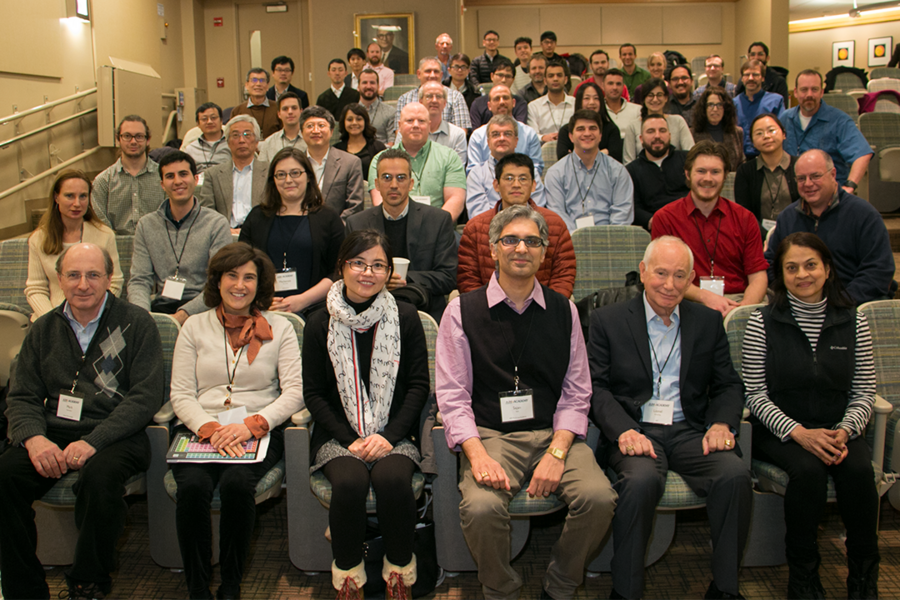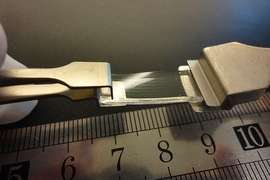How can driverless cars detect obstructions when it’s foggy outside? What new forms of light communications can supercharge the internal housekeeping of data centers to enable ever-faster cloud computing? Can we detect a gas leak along a 1,000-mile pipeline remotely, and at an ultralow cost? These were some of the questions participants investigated at an AIM Photonics Academy training session.
More than 60 people gathered at MIT on Jan. 16 for three days of lectures and design labs on integrated photonics. The program was organized by AIM Photonics Academy, which is part of AIM Photonics Institute, one of 14 Manufacturing USA institutes jointly funded with the federal government to accelerate advanced manufacturing in the United States. Attendees, mostly from industry, came from the U.S. and abroad.
Integrated photonics uses complex optical circuits to process and transmit signals of light, similar to the routing of electrical signals in a computer microchip. Students learned how to design device components and lay out photonic integrated circuits (PICs), for submission to AIM’s multiproject wafer facility in Albany, New York. They also learned about different applications for PICs, including datacom, sensors, and LIDAR for driverless cars.
Critical partnership
The technology is still emerging, and companies are looking for outside training to fill in the gaps they are unable to fill by themselves. “This partnership is critical for accelerating the adoption of photonic integrated chip technology across our enterprise,” says Nick Rhenwrick, Lockheed Martin’s AIM program manager.
The three-day AIM Winter Academy is part of a suite of AIM Academy education and training offerings. AIM Photonics Academy will post teaching packages and roll out online self-paced courses in integrated photonics that will be available for free on its website. In the spring it will begin rolling out edX courses to give students critical hands-on experience designing photonic integrated circuits.
These initiatives are geared for higher-skilled learners. Concurrently, AIM Photonics Academy is committed to introducing younger students to integrated photonics, and is working with TED-Ed to create three videos for K-12 students.
Sharing know-how widely
Education director Sajan Saini spoke about the feedback he received from students in the AIM Winter Academy. “They’re excited about the new technology, want to figure out how to deploy it, and are committed to the time and effort needed to master fabless photonics tools,” says Saini. “The time is ripe to disseminate our online and onsite teaching content as broadly as possible.”
Photonic integrated circuits have the potential to offer blockbuster solutions for driverless cars, data centers, gas sensors, and microwave communications in the coming years.
The emergence of an expert manufacturing platform and multiple applications-driven demands are the hallmarks of an extended period of industrial innovation, and integrated photonics is primed to offer high-performance and efficient solutions.








